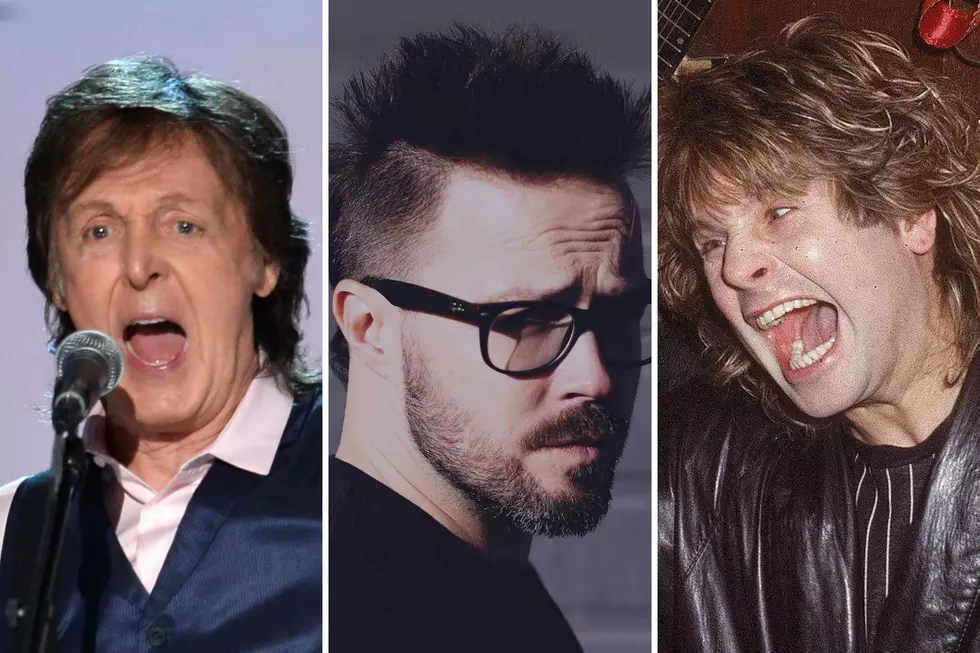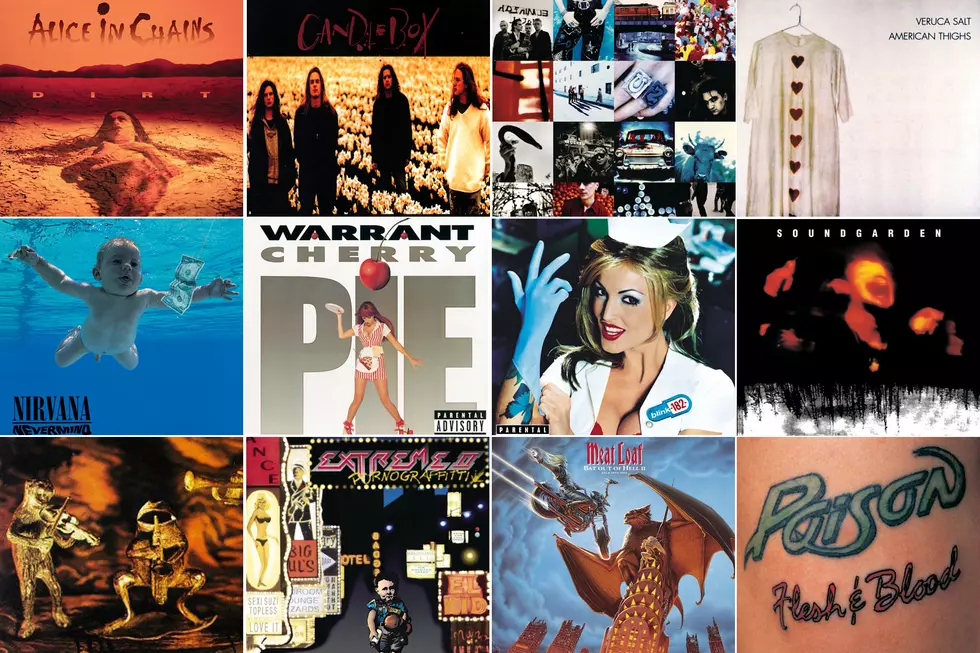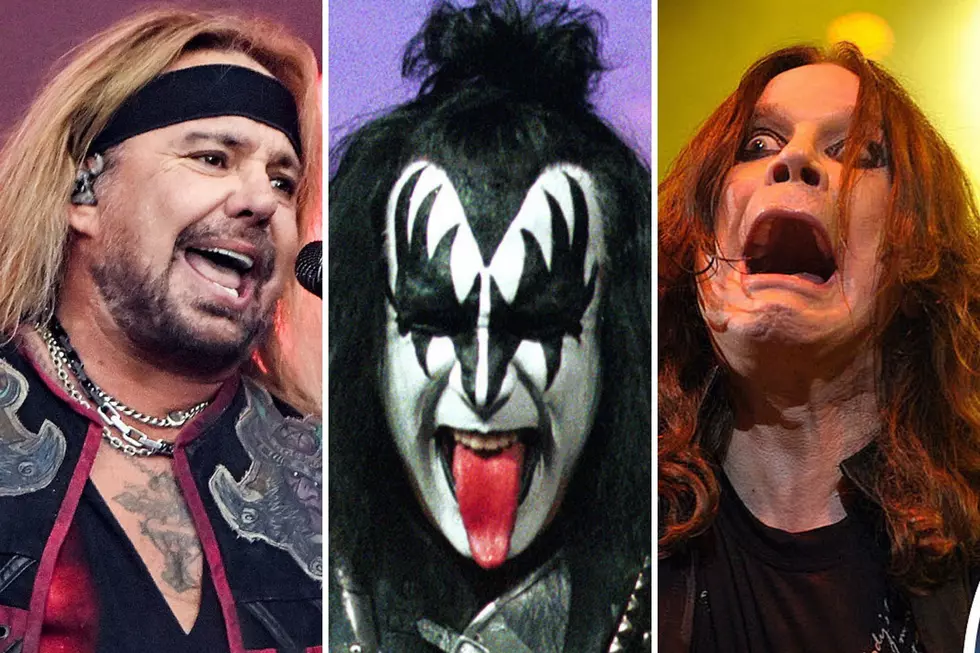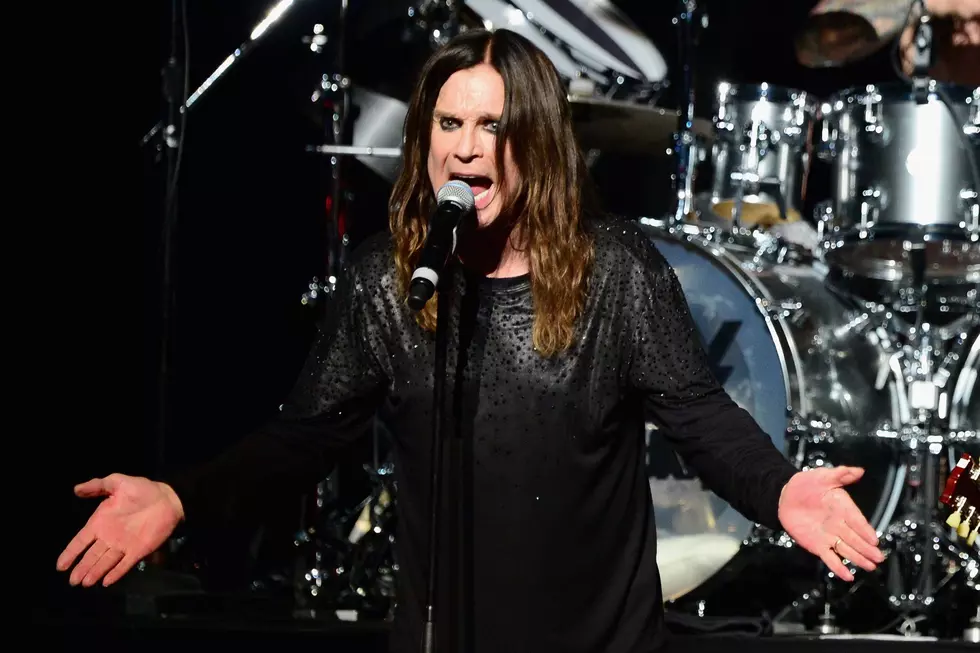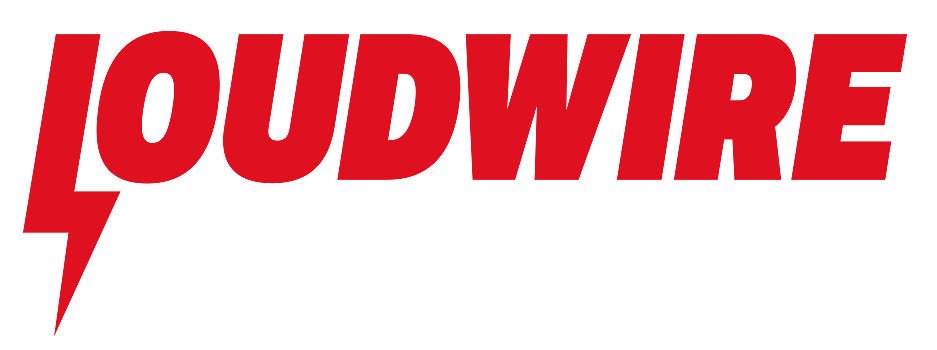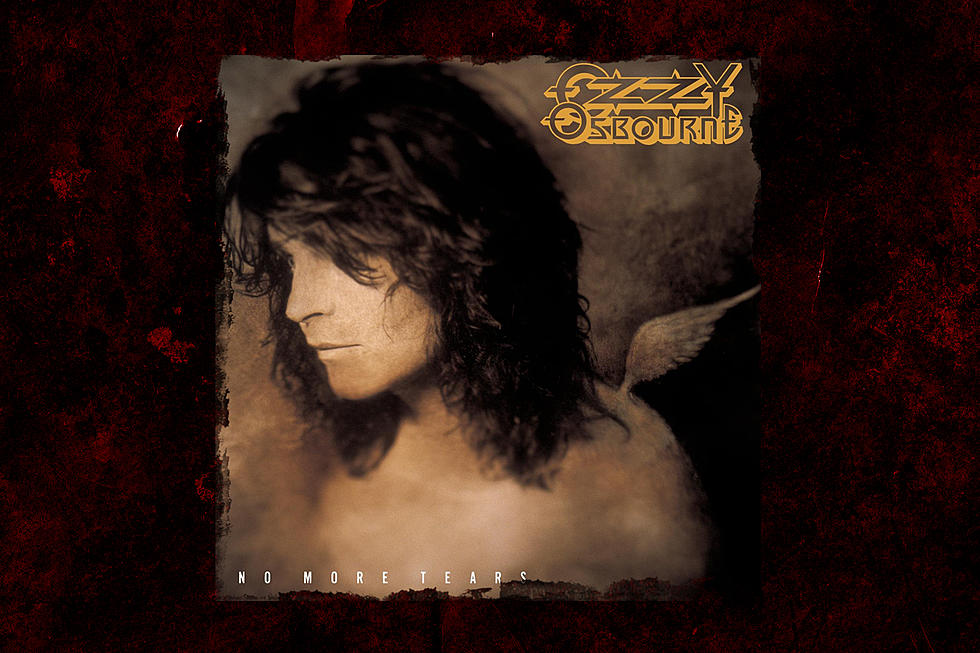
27 Years Ago: Ozzy Osbourne Gets Sober and Releases the Smash LP ‘No More Tears’
There was a major shift on the musical horizon that would forever alter the landscape of heavy metal in the early '90s, but Ozzy Osbourne managed to stay ahead of the curve with what would become the biggest selling album of his career: No More Tears (it was released Sept. 17, 1991).
The three years since 1988’s No Rest for the Wicked had been tumultuous in the land of Oz. Heavily intoxicated, he tried to kill his wife Sharon in September of 1989 and ended up being charged with attempted murder by strangulation, which landed him a lengthy stint in a court-ordered rehabilitation facility.
He was also in battling two different lawsuits brought against him by parents who claimed subliminal messages in Osbourne’s “Suicide Solution” from his 1980 solo debut Blizzard of Ozz and 1987 live album Tribute were responsible for the respective suicides of their 17-year-old and 16-year-old sons. The charges came in the wake of a high-profile case that was dismissed in 1988 where the parents of a 19-year-old who had taken his life blamed the singer under the same circumstances.
By 1991, things had settled down greatly. The courts ruled in favor of Osbourne and CBS Records in both cases in 1991 (the Supreme Court would do the same the following year when a joint appeal was filed). Additionally, he had gotten off alcohol, making the first album in his life while dry - though he later admitted to getting his hands on any pills he could to keep a buzz.
“A lot of people think you have to be fucked up to write good music,” Osbourne said in his 2009 autobiography I Am Ozzy. “But I reckon the album I did after coming out of [rehab], No More Tears, was my best in years. Maybe part of that was because I said to the band before we even started, ‘Look, we have to treat every song like it could be a hit single, but without being too hokey or try-hard.’ Everything on that album seemed to go right.”
Zakk Wylde, with one Ozzy LP under his belt, was clearly more comfortable with his role as a contributor to the composition process, laying down some searing leads and memorable riffs throughout No More Tears. The high-point from the guitarist came on the epic, nearly seven-and-a-half-minute long title track. His solo at the tail end of an extended orchestral and piano bridge builds with tension before descending into a flurry of notes that brings the song full circle; by that point, he felt like the true heir apparent to Randy Rhoads.
Wylde wasn't the only co-writer; Lemmy Kilmister co-wrote songs on the album. Motörhead had released their first album with Epic Records earlier that year, and it made sense for the label to try and pair the two old friends with some collaborations across their separate albums.
“That was one of the easiest gigs I ever had,” Kilmister said in his 2002 autobiography White Line Fever. “Sharon rang me up and said, ‘I’ll give you X amount of money to write some songs for Ozzy’, and I said, ‘All right – you got a pen?’ I wrote six or seven sets of words, and he ended up using four of them…I made more money out of writing those four songs than I made out of fifteen years of Motörhead – ludicrous, isn’t it?!”
The songs where Lemmy contributed frontloaded the album in “I Don’t Want to Change the World,” “Desire” and the ballad “Mama, I’m Coming Home,” which remains Osbourne’s highest charting single, topping out at No. 28 on the Billboard Top 100. Kilmister also co-wrote “Hellraiser,” which was re-recorded by Motörhead and released as the lead single to the band’s album March ör Die, as well as for the soundtrack to Hellraiser III: Hell on Earth, which were released a week apart in the summer of 1992.
“The reason I got Lemmy to help out with some of the lyrics is that I like his tongue in cheek attitude,” Osbourne told Hot Metal in 1991. “He’s cynical, but he can say 'Fuck you' in four sentences. One the greatest lines he wrote was, ‘Tell me I’m a sinner, I got news for you, I spoke to God this morning and he don’t like you’ (from 'I Don’t Want to Change the World'). I’d hum a melody and sing “Mama I’m Coming Home” and he would take it from there. It’s really weird coz I listen to that song and it’s as if I wrote it. It’s as he’s read my mind.”
The trade off for the union was Osbourne appearing on March ör Die for the track “I Ain’t No Nice Guy,” which had success at radio but didn’t keep Motörhead from getting dropped by the label when the promotional cycle behind the record came to an end.
One casualty of the No More Tears recording sessions was Osbourne’s on again/off again relationship with Bob Daisley. Mike Inez joined the band as bassist in January of 1991 and performed a handful of live dates, but when the group decamped to the studio to record No More Tears, something wasn’t clicking and the decision was made to bring in Daisley.
“A lovely bloke, nice chap he is, Michael,” Daisley told Song Facts. “But it wasn't sounding and feeling how Ozzy wanted it, so I got the phone call: ‘Will you come in and play on the album?’” Daisley said he wrote all the bass lines – Inez was credited with “bass and music inspiration” in the album’s liner notes – but when it came down to contributing lyrics, a long gestating issue with royalties once again reared its head that left a nasty rift that continues to this day.
“I was going to write the lyrics, but I said, ‘Well, I don't want to do a buyout this time. I'd rather get my songwriting credits and maybe put it through the publishing company,” Daisley said. “That's when I was asked to go home. I'd written six sets of lyrics for six of the songs. I was going to work things out with them, and then they said, ‘You go home now.’ And that was it. So I only played on that one, and I didn't get any songwriting credits.”
Osbourne's image was changing with the times: gone was the album cover imagery of singer having morphed into some sort of cartoonish monster like on Bark at the Moon, The Ultimate Sin and Diary of a Madman. Instead, a subtle – even sophisticated – sepia toned portrait of the frontman with a small angel’s wing on his shoulder was chosen as the No More Tears artwork, with the concept by Sharon.
“The idea was to give the album more of a mature vibe,” Osbourne said. “I mean, I couldn’t keep doing the blood-out-of-mouth thing – it was starting to get hammy.”
The promotional push for No More Tears was unlike any other in Osbourne’s career with six of the tracks getting released to radio stations and record stores in a promotional format. Seven videos, many receiving heavy rotation on MTV, were commissioned, including the title track, two for “Mama, I’m Coming Home,” “Time After Time,” a live version of “I Don’t Want to Change the World,” album opener “Mr. Tinkertrain” and closer “Road to Nowhere.”
Additionally, there was a fantastic warts-and-all documentary, Don’t Blame Me: The Tales of Ozzy Osbourne, which came out on home video a week after the album was released. Covering his career from Black Sabbath through the recording of No More Tears, it featured interviews with Bill Ward, Lars Ulrich, Kilmister and Alice Cooper.
The publicity blitz worked, with No More Tears ultimately spending 86 weeks on the charts with a peak position of No. 7 and going four times platinum at last count by the RIAA. Its success also allowed Osbourne to survive the onslaught of grunge, as he avoided being cast aside like many of his peers from the '80s and continue his relevance through the '90s.
You Think You Know Ozzy Osbourne?
Ozzy Osbourne Albums Ranked
More From Loudwire
